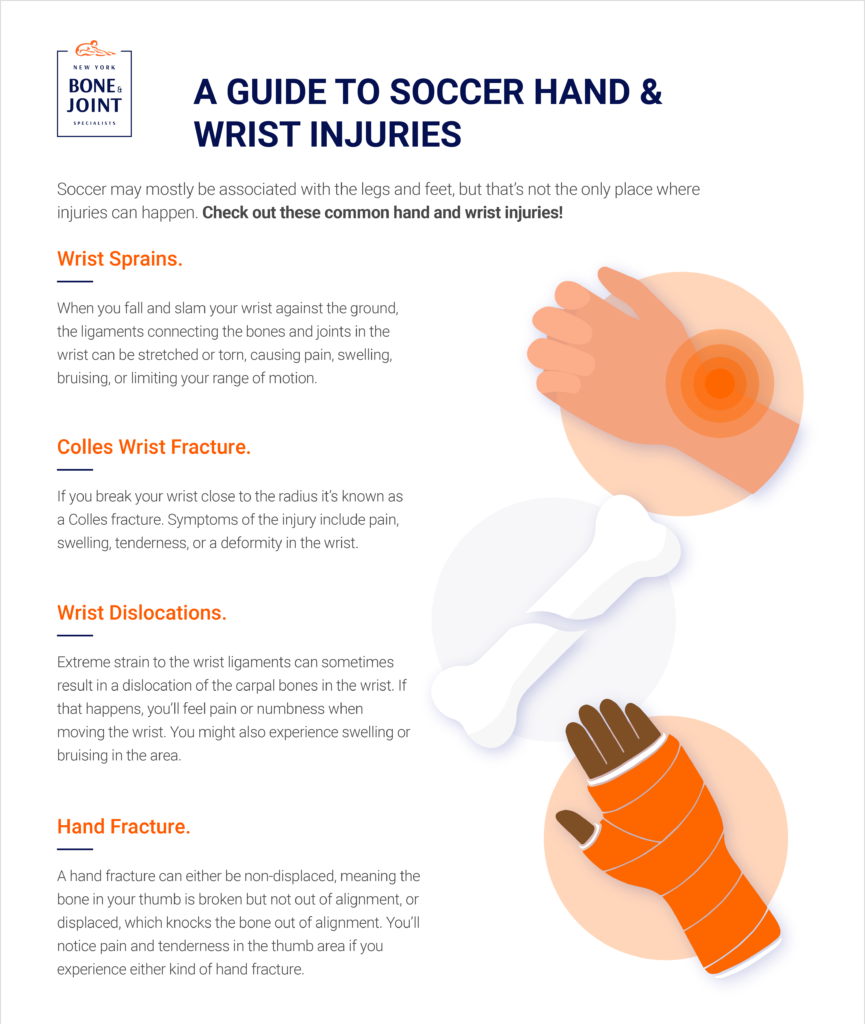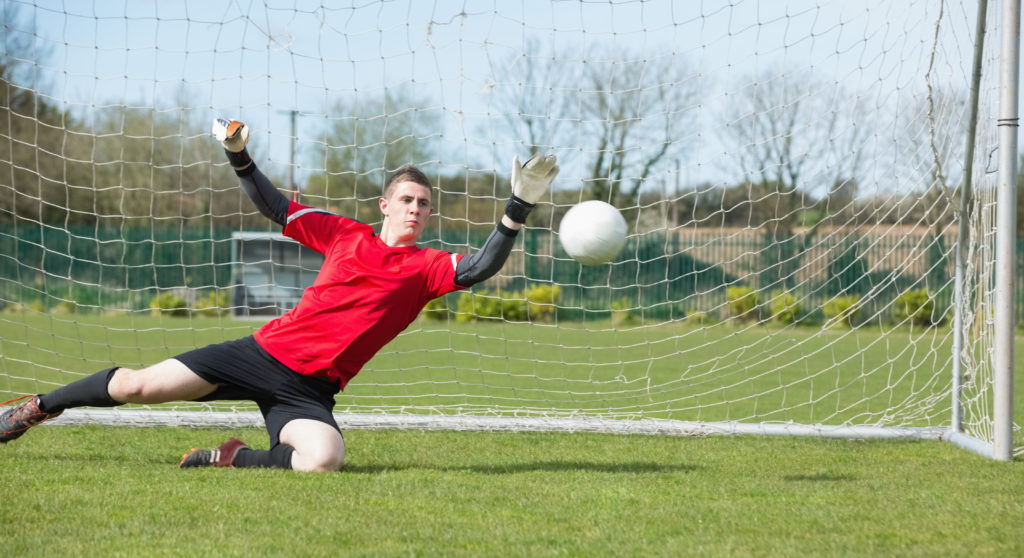Soccer may mostly be associated with the legs and feet, but that’s not the only place where injuries can happen. Your wrists and hands can be hurt too if you aren’t careful.
Soccer is one of the most popular sports worldwide, with millions of youngsters introduced to the game at an early age. Yet as with any high-speed sport, orthopedic injuries happen — including to the hands and wrists.
That may come as a surprise to some given that, unlike many other popular sports including football, basketball, and baseball, soccer doesn’t permit its players to use their hands (apart from the goalie, that is). Instead, soccer players use their feet to move the ball, which often results in hamstring pulls and tears — the most frequent soccer-related injuries. Less common, though still frequent, are injuries to the hands and wrists. These hand and wrist traumas can be just as painful as those related to the legs and should be avoided to keep players safe and healthy.
Common Hand & Wrist Injuries in Soccer
Hand and wrist injuries account for a small percentage of soccer-related orthopedic traumas. A study of European professional male soccer players revealed less than 1 percent suffered orthopedic damage to the hand, wrist, and forearm, with fractures the common trauma and goalkeepers exhibiting a higher incidence of injuries. However, when these injuries do occur, they can be seriously debilitating.
Hand and wrist injuries are typically the result of falls where a player instinctively reacts by reaching out with their arm and hand to break the tumble. For goalies, the risks are even greater since they can easily injure their hands, wrists, or fingers when they attempt to catch or stop a ball coming at them at a high speed. No matter what position you play — or at what level — it’s important to stay aware of hand and wrist injuries when on the soccer field. Here are the top 5 to watch out for:
Wrist Sprains. Ligaments connect the bones and joints of the wrist. When you fall and slam your wrist against the ground, these ligaments can be stretched or torn, causing pain, swelling, bruising, or limiting your range of motion. A period of rest and ice application can heal most sprains. For a severe sprain, a cast or surgery may be necessary to heal fully.
Colles Wrist Fracture. Between your wrist and elbow are two bones, the larger of which is the radius bone. If you break your wrist close to the radius it’s known as a Colles fracture. Symptoms of the injury include pain, swelling, tenderness, or a deformity in the wrist. The first line of treatment is wearing a cast to immobilize the bone, but surgery might be necessary in severe cases.
Wrist Dislocations. Extreme strain to the wrist ligaments can sometimes result in a dislocation of the carpal bones in the wrist. If that happens, you’ll feel pain or numbness when moving the wrist. You might also experience swelling or bruising in the area. Typically a doctor can shift the carpal bones into place and set the wrist in a cast so it can heal. If the injury is severe, you may need pins or screws to set the wrist as the ligaments heal.
Hand Fracture. The scaphoid, a small bone below the thumb, is extremely vulnerable to breakage and is at the core of hand fractures. A hand fracture can either be non-displaced, meaning the bone is broken but not out of alignment, or displaced, which knocks the bone out of alignment. You’ll notice pain and tenderness in the thumb area if you experience either kind of hand fracture. If the fracture is significant, you may require surgery.
Jammed Fingers. Catching a ball at a high speed can jam the fingers of a goalie, leading to ligament sprains, tears, and possibly a dislocation of the digits. Pain, redness, swelling, and difficulty grasping objects are all good indicators of a jammed finger. Luckily, most cases of jammed fingers can be healed through rest and icing.

Preventing Hand & Wrist Injuries on the Soccer Field
Soccer is fun for youngsters and adults alike. To prevent injuries on the playing field, follow these tips:
Wear Proper Footwear. Soccer is often played outdoors on grass, so you’ll want to wear shoes with cleats to prevent slips and falls. If playing indoors, wear shoes with treading on the soles for better traction.
Clear the Playing Field. Before taking the field, make sure it’s free of any debris of holes that could cause players to fall. A well-maintained field can prevent injuries.
Warm Up. Get your body ready to run and kick with warm-up exercises. Take 20 or 30 minutes to stretch your muscles before you play.
Tape Up. Because goalies are susceptible to impact injuries to the hand and wrist, tape up the wrist and hands for extra support and protection during a game.
Play Age Appropriately. Because children play soccer, discourage aggressive play that could cause injuries. Ensure the soccer ball is sized and inflated for a child’s size and age. A sports injury at a young age may result in orthopedic problems later in life, so preventing injuries now will keep your child healthy and playing for many years.
Keep Your Hands & Wrists Healthy On and Off the Pitch
New York Bone & Joint Specialists are experts in diagnosing and treating a variety of orthopedic conditions, including injuries to the hand and wrist caused by soccer or other activities. If you think you or your child has sustained a wrist injury, come see us for a consultation so you can start feeling your best again.




